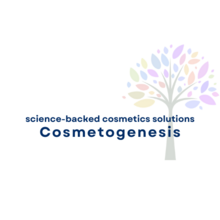
Cosmetogenesis Mission: Empowering Beauty Brands through New Product Development (NPD), Formulation Review, Manufacturing Optimisation, Troubleshooting, and more.
Cosmetogenesis helps beauty companies create cutting-edge products that meet the latest market demands. We support the development of unique formulations, troubleshoot manufacturing issues, and guide your products through the production process.
Remember! You are about to share personal information with us. While your personal details, formulations, raw material sources, etc., are safe with us, we advise you to download, sign, and return the NDA to ensure everyone is covered!

In the cosmetics industry, just like in any other business, the perfect moment never arrives. Your perfect moment is NOW, and you don’t have time to waste testing approving and even funding someone else’s formulas. You want your product on shelves ASAP!
Some might quickly argue that "only the Stability Test requires three months to complete." We agree.
While rules must be followed, they should also serve a purpose. When they are no longer functional, it's time for a change!
With over 20 years in the cosmetics industry, we no longer see ourselves as followers — we have the confidence and mentality to shape the cosmetics industry together!
**written money-back guarantee
In Cosmetogenesis we help you turn your ideas into real, market-ready products. From research and concept development to prototyping and final formulation, Cosmetogenesis is your partner in innovation.
Two months of accelerated stability testing are generally considered equivalent to demonstrating a one-year shelf life for a cosmetic product. After completing the first month of stability, the Preservative Efficacy Test (PET) is initiated, which requires approximately one month. This means that within two months, the product is ready for launch.
Meanwhile, the stability study continues in parallel in order to support an extended shelf life of 3+ years. At that stage, the Period After Opening (PAO) symbol is formally included on the label.
Is your formula effective, safe, and compliant? We evaluate your product formulas to ensure they meet regulatory requirements and perform as expected in the market.
the process:
Step 1: Review ingredients, efficacy, and safety.
Step 2: Ensure formulas are in line with market needs (e.g., cruelty-free, sustainable, or vegan).
Step 3: Provide detailed feedback and improvement suggestions.
The Formula Review Service of Cosmetonoesis is designed to add tangible value to your creation. Your recipe is transformed into a scalable, regulatory-compliant formula, ensuring:
All within the framework of U.K. and E.U. cosmetics regulations.
This is not merely formulation design — it is Formula Engineering.
Stability testing is not something the law specifically forces cosmetic brands to do—but it is a vital part of Good Manufacturing Practice (GMP), which every responsible company must follow. This testing makes sure that your product stays safe, effective, and pleasant to use for as long as it should. Brands that ignored stability in the past ended up losing far more—through product recalls, refunds, and disappointed customers—than they ever saved by skipping it. After all, can a company that truly cares about its reputation and its customers afford to put products on the market without knowing they are stable?
Accelerated stability testing works on a simple principle: by raising the temperature, we speed up the natural aging process of a cosmetic product, allowing us to predict in weeks or months what would normally happen over years. This scientific approach, based on well-established physical laws, helps us observe changes in texture, color, fragrance, or performance before they would appear under normal conditions. At Cosmetonoesis, we provide a complete stability report with all observations, and by combining these results with the packaging characteristics and the intended directions of use, we accurately determine the product’s expiry date or Period After Opening (PAO).
If your product formula isn’t performing as expected or you’re encountering manufacturing issues, we can help you identify the problem and recommend a solution
the process:
Step 1: Analyze your product formula and identify weaknesses.
Step 2: Troubleshoot manufacturing issues (e.g., stability, texture, scale-up).
Step 3: Implement solutions and optimize processes.
Common issues we have successfully addressed over the years in the industry:
- Product instability and separation
- Product discoloration
- pH stabilization
- Sedimentation
- PET failure
- Product and packaging leakage